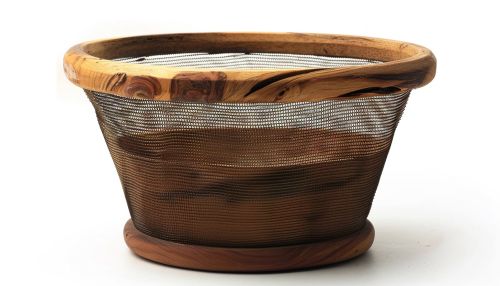Sieving
Introduction
Sieving is a method used in the separation of components of a mixture based on their size. The process involves passing a mixture through a sieve or a series of sieves with different mesh sizes. The smaller components pass through the sieve, while the larger ones are retained. This method is commonly used in various industries such as mining, agriculture, pharmaceuticals, and food processing.
History
The concept of sieving has been in existence for thousands of years. Ancient civilizations such as the Egyptians and Romans used sieving in their daily activities, particularly in food preparation and gold mining. The method has evolved over the years with the advancement in technology, leading to the development of more efficient and accurate sieving machines.


Sieving Process
The sieving process involves several steps. First, the mixture to be sieved is placed on the top sieve. The sieves are then shaken either manually or using a machine. The particles smaller than the mesh size of the sieve pass through, while the larger particles are retained. This process is repeated with sieves of decreasing mesh size until the mixture is fully separated.
Factors Affecting Sieving Efficiency
Several factors affect the efficiency of the sieving process. These include the size and shape of the particles, the mesh size of the sieve, the duration of sieving, and the method of agitation. Understanding these factors is crucial in optimizing the sieving process for maximum efficiency.
Applications of Sieving
Sieving has a wide range of applications in various industries.
Mining
In the mining industry, sieving is used in the separation of valuable minerals from their ores. The ores are crushed into a fine powder and passed through a series of sieves to separate the minerals based on their size.
Agriculture
In agriculture, sieving is used in the separation of grains based on their size. This is important in ensuring uniformity in the size of the grains, which affects their market value.
Pharmaceuticals
In the pharmaceutical industry, sieving is used in the production of drugs. The raw materials are sieved to ensure uniformity in the size of the particles, which affects the quality of the final product.
Food Processing
In the food processing industry, sieving is used in various processes such as milling of flour and production of cheese. The raw materials are sieved to remove any impurities and ensure uniformity in the size of the particles.
Sieving Equipment
There are various types of sieving equipment available in the market. These include vibratory sieves, rotary sieves, and centrifugal sieves. The choice of sieving equipment depends on several factors such as the nature of the material to be sieved, the desired particle size, and the volume of material to be processed.
Future of Sieving
With the advancement in technology, the future of sieving looks promising. Developments in sieving equipment are expected to increase the efficiency and accuracy of the sieving process. Additionally, the integration of sieving machines with computer systems is expected to provide real-time data on the sieving process, which can be used to optimize the process for maximum efficiency.
